The creation of the Taipei Expo Park following on from the Taipei International Flora Exposition in 2010 and 2011, and the redevelopment of the area surrounding Zhongshan Soccer Stadium (中山足球場) and Yuanshan MRT Station (圓山捷運站), made available the kind of wide open urban space that is relatively rare in overcrowded Taipei. For architect Eugene Yeh (葉裕清), it was the opportunity to do something different, and late last year he began plans to establish Maji Maji Square (Maji Maji 集食行樂), an unconventional collection of shops and restaurants that he hopes will increase the leisure options available to Taipei residents. Maji Maji Square officially opened at the beginning of last month.
Maji Maji is located in a large covered area on the eastern face of the Zhongshan Soccer Stadium, facing — but slightly obscured from — the bustling traffic of Zhongshan North Road Sec 6. Last year, Yeh saw in this space a chance to build the kind of market that he had seen during his travels around the world.
“I’ve been traveling around the world since I was 11 years old. I am now 52 years old. I’ve been thinking all the time of bringing some brilliant ideas from all my traveling experiences back to Taiwan. … The idea for Maji Maji came from so many corners of the world including a street in Tokyo, a market in Madrid, a food court in Paris, a market in New York City,” said Yeh in a phone interview with the Taipei Times.
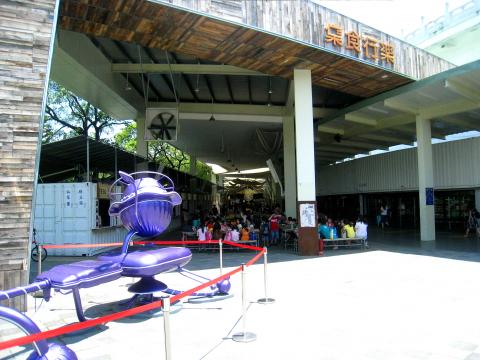
Photo: Ian Bartholomew, Taipei Times
“When I looked at the location last year, I could see it had potential. It is not such a popular location at the moment, but it is close to the MRT. We wanted to do something to upgrade the Flower Expo food court to make it more attractive. … I believe that this kind of combination [of shops] is not easy to find in Taipei at the moment, but this kind of market square is quite common overseas, and I think Taipei people will love it.”
The space, originally built as part of the Taipei International Flora Exposition, has a high ceiling to protect against rain, but Yeh recognizes that it is far from perfect, especially for heat-shy Taipei shoppers. “We have actually had a lot of complaints that it is too hot there and that there is not enough parking,” Yeh said. “We also understand that if the space could be air conditioned, then it would not really fit in with our idea [of creating an outdoor market]. I want to tell people that this is not perfect, but this is a kind of more natural style. I actually live in Bangkok, which is much hotter than Taipei, but in Bangkok there are many outdoor spaces that attract a lot of people. So we need to try [in Taipei].”
According to Jay Tian (田澧杰), marketing manager for Maji Maji Square, the area rented by Yeh and his partners covers nearly 10,000 square meters and has a total of 85 shops and booths, 50 of which are already occupied. These range from small food court style stalls with outdoor seating, to chic establishments such as Trio Wine, a trendy wine bar that is a side project of the hugely popular Trio Cafe located in Huashan 1914 Creative Park.
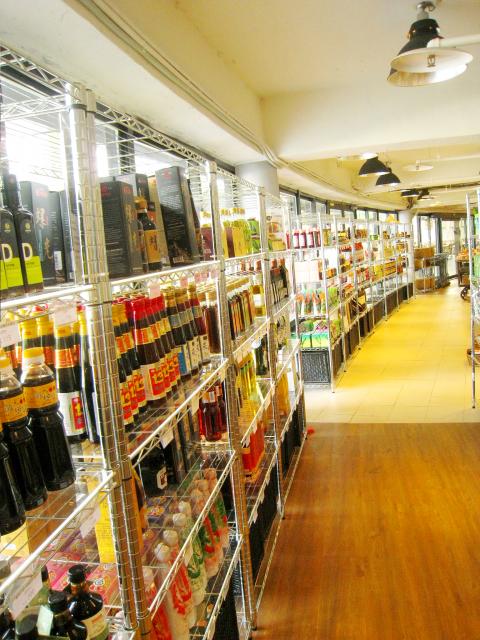
Photo: Ian Bartholomew, Taipei Times
Artisanal deli
Yeh takes an active part in the selection of shops that he wants to participate in Maji Maji Square so as to build up something unique. The centerpiece of the square is the Maji Maji Deli, which brings together a wide range of locally produced artisanal foods. “I wanted to bring together the food that I love,” said Yeh, who is a passionate cook and gourmet. There are some similarities with upmarket supermarkets such as Breeze Center, but with an emphasis on local produce.
“My first step is to have the produce of local farmers in my market,” Yeh said. “Then I want to start importing unique food from other parts of the world. … I like to make a space for all the food I like, where it can be found together. It is a very personal project in my mind, but I want to share these things with people who like to cook at home.”
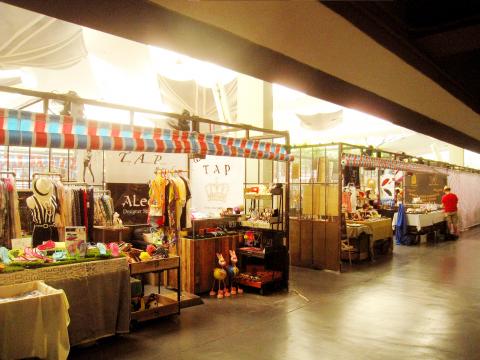
Photo: Ian Bartholomew, Taipei Times
In addition to the food court and the deli, a number of upmarket restaurants have set up shop in Maji Maji, and there is a central area for selling arts and crafts. Tian said that when choosing businesses to come in on the Maji Maji project, he is looking for creative endeavors that are not just clones of what can be found elsewhere. “I don’t want things that can be found in big department stores. I want Maji Maji to be a place where people come in search of surprises,” Yeh said.
Yeh said that despite the need for further fine-tuning, he believes that he has realized his original conception. “When I see people come to explore Maji Maji with their families and friends, I feel ‘this is what I want,’” Yeh said. “We also see a potential to expand this idea to other parts of the island.”
Adding to the street market atmosphere, Maji Maji plays host to small outdoor concerts over the weekend, with information posted on its Facebook page.
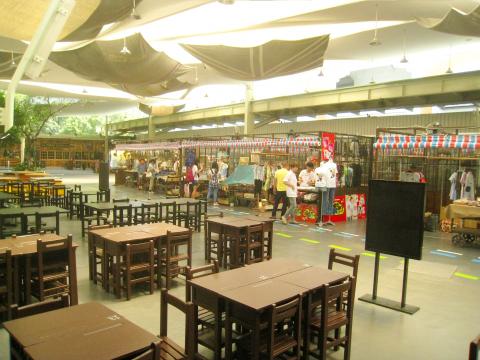
Photo: Ian Bartholomew, Taipei Times

That US assistance was a model for Taiwan’s spectacular development success was early recognized by policymakers and analysts. In a report to the US Congress for the fiscal year 1962, former President John F. Kennedy noted Taiwan’s “rapid economic growth,” was “producing a substantial net gain in living.” Kennedy had a stake in Taiwan’s achievements and the US’ official development assistance (ODA) in general: In September 1961, his entreaty to make the 1960s a “decade of development,” and an accompanying proposal for dedicated legislation to this end, had been formalized by congressional passage of the Foreign Assistance Act. Two

March 31 to April 6 On May 13, 1950, National Taiwan University Hospital otolaryngologist Su You-peng (蘇友鵬) was summoned to the director’s office. He thought someone had complained about him practicing the violin at night, but when he entered the room, he knew something was terribly wrong. He saw several burly men who appeared to be government secret agents, and three other resident doctors: internist Hsu Chiang (許強), dermatologist Hu Pao-chen (胡寶珍) and ophthalmologist Hu Hsin-lin (胡鑫麟). They were handcuffed, herded onto two jeeps and taken to the Secrecy Bureau (保密局) for questioning. Su was still in his doctor’s robes at

Last week the Democratic Progressive Party (DPP) said that the budget cuts voted for by the China-aligned parties in the legislature, are intended to force the DPP to hike electricity rates. The public would then blame it for the rate hike. It’s fairly clear that the first part of that is correct. Slashing the budget of state-run Taiwan Power Co (Taipower, 台電) is a move intended to cause discontent with the DPP when electricity rates go up. Taipower’s debt, NT$422.9 billion (US$12.78 billion), is one of the numerous permanent crises created by the nation’s construction-industrial state and the developmentalist mentality it
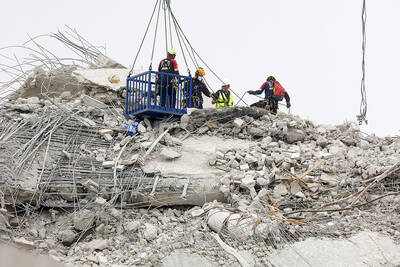
Experts say that the devastating earthquake in Myanmar on Friday was likely the strongest to hit the country in decades, with disaster modeling suggesting thousands could be dead. Automatic assessments from the US Geological Survey (USGS) said the shallow 7.7-magnitude quake northwest of the central Myanmar city of Sagaing triggered a red alert for shaking-related fatalities and economic losses. “High casualties and extensive damage are probable and the disaster is likely widespread,” it said, locating the epicentre near the central Myanmar city of Mandalay, home to more than a million people. Myanmar’s ruling junta said on Saturday morning that the number killed had